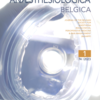Low Flow Anesthesia – Mission Impossible?
Published online: May 08 2023
Abstract
Because low flow anesthesia reduces waste of environmentally unfriendly inhaled anesthetics, it is coming in the spotlights – again. Despite a detailed theoretical description, considerable teaching efforts of this simple technique have not succeeded in consistently lowering fresh gas flows (FGF) during manual control1. Worse, even though technology has solved the hurdles of manual delivery and the technology is widely available, we fail to maximally implement it. The delivery of inhaled anesthetics with high FGF prior to securing the airway remains common practice. We fail to consistently adjust MAC to age and poorly titrate opioids to reduce the fraction of the MAC we administer. We fail to incorporate hysteresis which is reflected in the use of excessively high FGF and vaporizer settings during wash-in and in the failure to maintain low FGF prior to emergence (“coasting”). By failing to fully appreciate the quantitative effects of the delivery if inhaled anesthetics we miss the opportunity to reduce waste to the absolute minimum. Belief and myth are strong when the environmental impact of inhaled anesthetics is considered. We need better, detailed life cycle analyses with low flow data before making claims pro/con inhaled/TIVA. We tend to lose sight of perspective, and have to continue to weigh the impact of drug selection on patient care.
